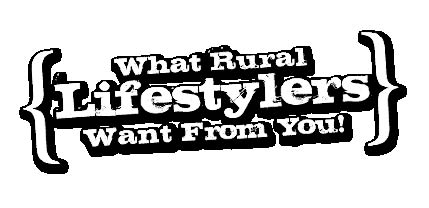
Tucked inside that camouflage tent or tree stand is a hunter that should be your next customer. Why? The market is huge — about 12 million strong. Hunters spend money — about $2,000 a year on everything from leases to gear to travel. And they need your equipment, as many are planting food plots to attract that trophy buck.
“I know guys who have mortgaged their houses to buy tractors because they’re hunters. It’s a big market, I can tell you that,” says Pat Lefemine, of Union, Conn.
Lefemine is an expert hunter whose hobby has become a passion and whose passion has become successful ventures online and in the real world. He is now partnering with tractor maker McCormick USA to establish a 310-acre habitat for whitetail deer. He shares his story and offers strategies for how dealers can effectively sell to the hunting market.
From the Beginning
Lefemine started hunting in 1977, first as a trapper then as a bow hunter. He was raised in Connecticut, but his parents were raised in New York City.
Meet Rural Lifestyler
Pat Lefemine
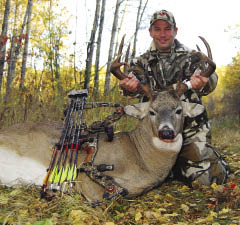
Pat Lefemine has taken more than 300 big game animals including 20 record-book whitetail bucks by bow. He has also taken a lion, cape buffalo, grizzly bear, leopard, elk and 10 other varieties of big game.
Occupation: A senior executive for a Fortune 200 company, Pat Lefemine is also founder of Bowsite.com, an online community of bow hunters, and DeerBuilder.com, an online community for those developing deer habitats.
Property: Lefemine lives in Union, Conn., and his deer habitat property is in Oneida County, N.Y. It’s a 310-acre hunting tract, consisting of fields, swamps and forests.
Equipment: McCormick X10.55M tractor, 54 horsepower with 47 PTO horsepower. A suite of McCormick by Woods attachments: front-end loader; backhoe; post hole digger (auger size, 10 inches x 48 inches); 6-foot box blade; stump grinder; 6-foot rotary cutter; 6-foot disk harrow; 6-foot rotary tiller; 6-foot turf renovator. Also, chain saws, all-terrain vehicles and snowmobiles.
“They were afraid of guns,” Lefemine says, so they compromised on a bow. “Bow hunting became an absolute passion and it stayed with me my whole life and has shaped everything I do.”
Lefemine excels at it, too. He has taken more than 250 whitetail deer, 20 of which were record bucks. He says trophy hunters measure deer in terms of antler size vs. body weight, so his biggest based on antler size is a 166-inch buck taken in Kansas. By body weight, it’s a 302-pound buck shot in Canada.
He has also taken nearly 300 big game animals with a bow including an African lion, cape buffalo, grizzly bear, leopard, elk and several other species.
Lefemine’s other life — his professional career — took him into the information technology (IT) world. He graduated from college in 1987 and built his first website in 1994. He worked for several insurance companies and now serves as a senior executive with a Fortune 200 firm. His IT expertise circled back into bow hunting in 1996, when he developed www.bowsite.com, the first online site for bow hunters. He developed the site to connect with fellow hunters and to combat anti-hunting messages.
“Bowsite was launched before Google and before Facebook. Yahoo! beat us by one year. We have the distinction of being in the good company of web innovators,” Lefemine says.
“When we first started, websites were trying to copy magazines. We knew early on that the strength of our site was interactivity — hunters sharing their hunting experiences and asking questions. Hunters love to share photos,” Lefemine says.
It took six months to get their first 1,000 visitors. Now, an average of 25,000 people visit the site each day and more than 7 million people visited the site in 2011. It’s the top archery website in world with over 80 discussion forums, feature articles, games, live hunts, outfitter reports and more.
That formula of hunters sharing ideas with a community is the basis for Lefemine’s latest venture, www.deerbuilder.com, a website launched this spring. DeerBuilder.com is dedicated to the food plot and deer habitat community.
Habitat Development
Lefemine developed his first habitat project in 1999 on 30 acres he owned in Pennsylvania. The food plot was fairly small, about one acre, and he mowed about four acres. The goal was to attract deer, of course, but also to share it on Bowsite.com.
“Every spring we would plant a food plot, then take photos and show our progress on the site. We would hunt the plot at the end of the season and then show our visitors deer activity created by the plot. Some of the plots were failures, but we told people as much about the failures as the successes,” he says.
Lefemine used a Ford 9N and then a Ferguson TO-20 for the project. He traded both of those for a Ford 2000 tractor he found on a used car lot. His implements included a 5-foot rotary cutter, a 4-foot harrow, a spreader and a two-bottom plow.
“The tractors were constantly breaking down and I’d spend entire weekends getting them running after longer intervals between uses,” he says.
Still, Lefemine says the project was among the most popular features on the site, and one of the most fun. The project was featured on Bowsite for almost 10 years.
In 2010, he thought there might be another opportunity, based on the interest in food plots and habitats — and the lack of resources on the topic.
“We saw it as a good opportunity and it’s always nice to marry business with your passion. I talked to my family about buying a bigger piece of property. That was the genesis for DeerBuilder.com.”
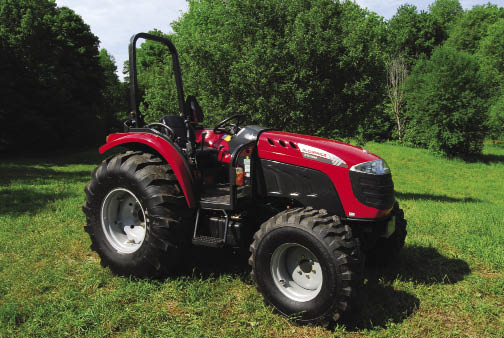
Lefemine utilizes a variety of attachments to address the needs of habitat tasks, which range from planting to fence building to tree clearing.
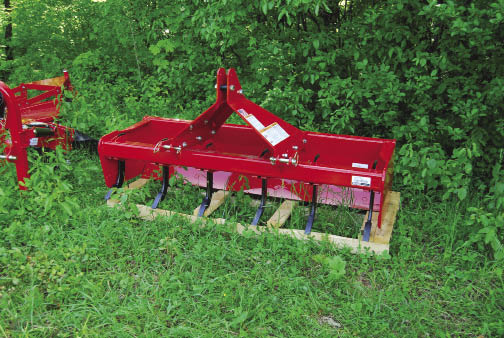
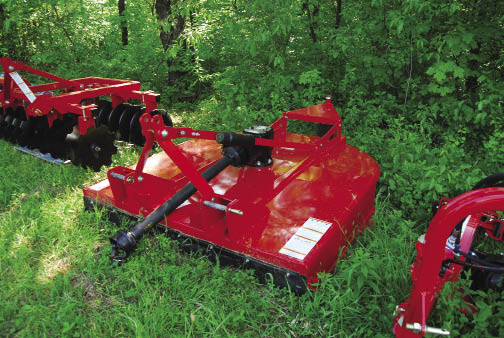
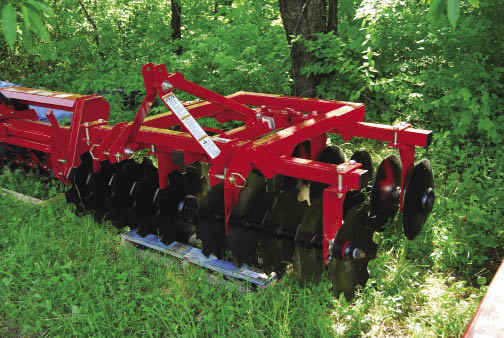
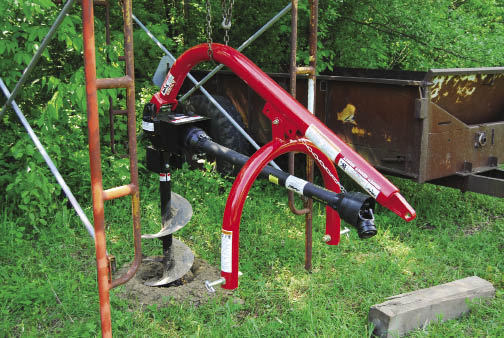
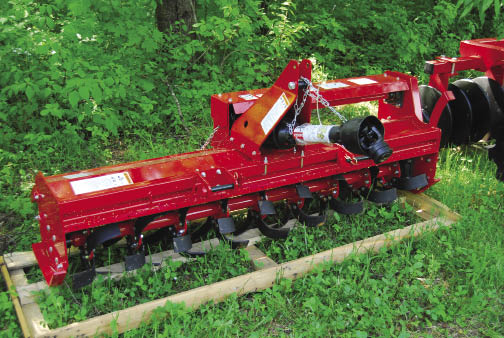
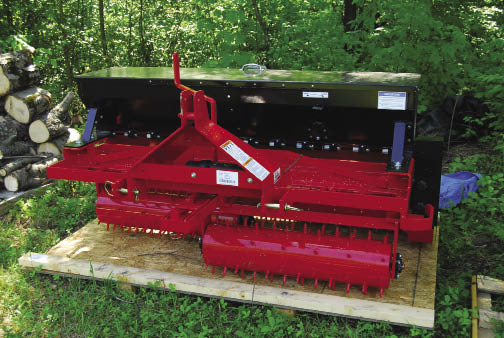
The brand new DeerBuilder.com site, which launched this spring, is part of the Bowsite.com network. It is devoted entirely to deer habitat management and food plots. The showpiece for DeerBuilder.com is the “Property Showcase” where his online community shares their properties and food plots.
The site offers discussion forums, articles, seed and crop choice information and trail camera photos. It will also be host to food plot experts, who will answer questions.
Business and Passion
Lefemine and his family found the perfect land for the habitat project located in Oneida County, N.Y., in the foothills of the Adirondack Mountains.
The 310-acre parcel is a mix of fields, swamps, semi-mature timber and immature forest. It contains more than 1,000 apple trees and is surrounded by four larger parcels. The property was already a hunting tract, home to whitetail deer, black bear, coyotes, bobcats, fishers (part of the weasel family) and a variety of other small game.
“I fell in love with it. If a farmer would look at it they would go 100 miles in the opposite direction because it has a lot of stones and swamps. I liked it for the rich habitat and built-in food sources for wildlife. It had everything it needs for a habitat project, but it needed a lot of work.”
Lefemine knew he needed a partner to accomplish a project of this size and equipment that could handle the task.
“This is not a market that is dominated by any tractor company. I thought it was a perfect fit for McCormick. I’ve always been a big fan of McCormick tractors,” he says, because the tractors deliver efficiency and power, without a high price.
Lefemine took his idea straight to the top — to Doug Rehor, chief executive officer for McCormick USA.
“Doug is entirely focused on his dealers and ways to find potential markets for them to be successful. He was looking for innovative ideas to help them sell more equipment,” he says. “He’s very hands-on, energetic and open to new ideas and I like working with people like that.”
The timing was also perfect for McCormick. They had just entered into a partnership with Oregon, Ill.-based Woods Equipment and a new brand was born — McCormick by Woods. Offered exclusively through McCormick’s national dealer network, the brand includes a full line of agriculture and landscape equipment.
“This partnership is a big deal for us. We believe McCormick can do very well in the hunting market, primarily due to the equipment we offer, our focus on it and through partnership with people like Pat,” Rehor says. “This segment is huge and we’re trying to be the only company that literally leads it when it comes to small tractors and attachments.”
He says the collaboration with Lefemine provides in-the-field expertise he can share with his dealers. And, Lefemine provides feedback to McCormick’s development team on how the equipment supports food plot planting.
Getting Down to Work
Lefemine expects the DeerBuilder habitat project to take from five to seven years. He will turn to DeerBuilder members for direction on what to plant. The tract has five fields where they plan to experiment with different food plots such as soybeans, peas, oats, turnips and brassica (a plant in the mustard family).
Hunting by the numbers:
Source: Congressional Sportsmen’s Foundation
He has already tested one two-acre food plot last year with brassica and turnips, which deer fed on over the winter. He documents deer feeding patterns and travels through 15 game cameras set up throughout the property
Lefemine is preparing the habitat and maintaining the property with the diesel, four-wheel drive, 54 horsepower, with 47 PTO horsepower tractor. He says he looked at options ranging from 20 horsepower machines to row-crop tractors, but the this one fit the job.
He chose a tractor with ROPS (rollover protection system) instead of a cab to allow for easier access around trees.
The variety of attachments addresses the needs of habitat tasks, which range from planting to fence building to tree clearing.
Lefemine offers a rundown of the equipment and how it is being used:
- Post hole digger (auger size, 10 inches x 48 inches): “Our project is not just about putting out food plots. It’s about fences and gates, too.”
- Box blade (6 feet): For smoothing out roads and leveling food plots.
- Stump grinder (cutting wheel: 20-inch diameter, 1,037 rpm): “We cut a lot of trees down and can’t pull up all the trunks. With the PTO-driven grinder, we can grind to 10 inches below the surface.”
- Rotary cutter for mowing fields and paths (6 feet).
- Disc harrow (6 feet): The harrow is used for all first passes in the food plots.
- Rotary tiller (6 feet): The tiller is used for subsequent passes in the food plot. Lefemine says it provides a finer seed bed than the harrow and it can maneuver through narrow areas such as between trees and narrow pathways.
- Turf renovator (6-feet, 6-bushel capacity seed bin): For larger seeds, Lefemine prefers the more precise seeding and soil compaction provided by the renovator.
Lefemine also recently added a front-end loader and a backhoe to deal with a major problem — stones and boulders.
“When we started working the soil, we found thousands of suitcase-sized rocks, which were going to damage the attachments if they weren’t removed.”
He says one rock was the size of a Volkswagen. For that problem, they dug a deep hole with the backhoe next to the boulder and then rolled the rock into that hole.
One other piece of equipment he doesn’t yet own is a no-till drill.
“This is a critical piece of equipment for food plots because you can drill into existing vegetation in rough areas where tilling would create erosion and weed problems. Unlike a farmer’s field, my fields can be rough. I can drill into tight areas with existing vegetation where tilling isn’t practical.”
Besides the equipment for preparing the food plot, they also use all-terrain vehicles, snowmobiles and chain saws for clearing trees and brush. And, of course, lots of hunting gear. However, this property is bow hunting only. Rifles are only used to eliminate predators such as coyotes.
Understanding the Hunter
Lefemine says a rural lifestyle dealer can earn a hunter’s business if they ask questions and show sincere interest in the project.
Study Up
Online resources to help you learn more about the hunting and deer habitat communities:
www.bowsite.com
www.deerbuilder.com
www.qdma.com (Quality Deer Management Assn.)
“The most important thing they can do is to ask about the character of the hunter’s property. Is it wet, dry, rocky? Is soil acidity a problem in that area? If so, give him references for the local co-op and lime truck guy. Sometimes the smallest gestures build relationships that lead to long-term customers,” Lefemine says.
Dealers should recognize most hunters won’t make money off their habitat projects.
“They don’t want to use cheap equipment, but they can’t spend $18,000 on a seed drill,” he says.
Although they may limit what they spend on one piece of equipment, Lefemine says there’s no limit to what they’ll spend overall. And even though the average hunter spends only 18 days in the sport each year, the habitat developer is maintaining their property year-round.
“A dealer who understands the hunting market will know that a 50 horsepower ROPS tractor is far more practical for deer habitat projects than a 150 horsepower cab version.”
Dealer Takeaways
- Hunters who are developing deer plots and wildlife habitats can be a significant market for the rural lifestyle dealer.
- Spend time researching the hobby to be more knowledgeable when hunters enter your dealership. Learn about their particular habitat to recommend the best equipment and offer suggestions for equipment they hadn’t yet considered.
- Recognize that hunters aren’t making a profit off their hobby, so recommend equipment accordingly. However, many are willing to spend what they need to get the quality they desire.
“Hunters also love to deal with other hunters. When a hunter walks into a tractor dealer, he will seek out the guy who understands the difference between a 150-inch buck and a 150-pound buck. Serious deer hunters talk in terms of antler scores, not body weight.”
Lefemine says that dealers can turn to online resources, such as his DeerBuilder.com, to better understand what challenges hunters are facing as they develop food plots and habitats. This could uncover other selling opportunities.
Also, dealers should remember hunting can sometimes be a family hobby. Lefemine hunts with his wife, Julie, and his sons, Pat, Jr. and Matt. His daughter, Abigail, will join in when she gets older.
Lefemine says the time spent researching this new market is worth the effort. “It’s a safe bet saying that every hunter who buys land for whitetails will eventually shop for a tractor and attachments.”





Post a comment
Report Abusive Comment